Blog
A Tactical Guide to Diagnosing and Resolving Bottlenecks in Kanban26 May 2025

A healthy Kanban system's work status can speak for itself — if you’re listening. Bottlenecks are not so much a surprise, but a structural inevitability, particularly when complexity increases. The challenge isn't the existence of flow constraints—it is whether you can detect and resolve them before they calcify into organizational drag.
We're here to offer a few concrete approaches to identifying and resolving bottlenecks that slow down progress in Kanban workflows. But rather than sticking to surface-level advice, we'll dive deeper for a clear, field-tested take on regaining flow control.
1. Read the board as a system, not a to-do list
All Kanban boards are visual, but few are interpreted dynamically. To change that, shift your gaze from individual tasks to system behavior. Observe work processing tendencies over time: where cards accumulate, where they hardly ever move to, where they churn.
What to track?
Column-specific queue lengths and repetitive stagnation periods. Use timestamps or automated task aging markers to reveal stagnation. A card aging more than 1.5x the cycle time average for that column is generally a red flag.
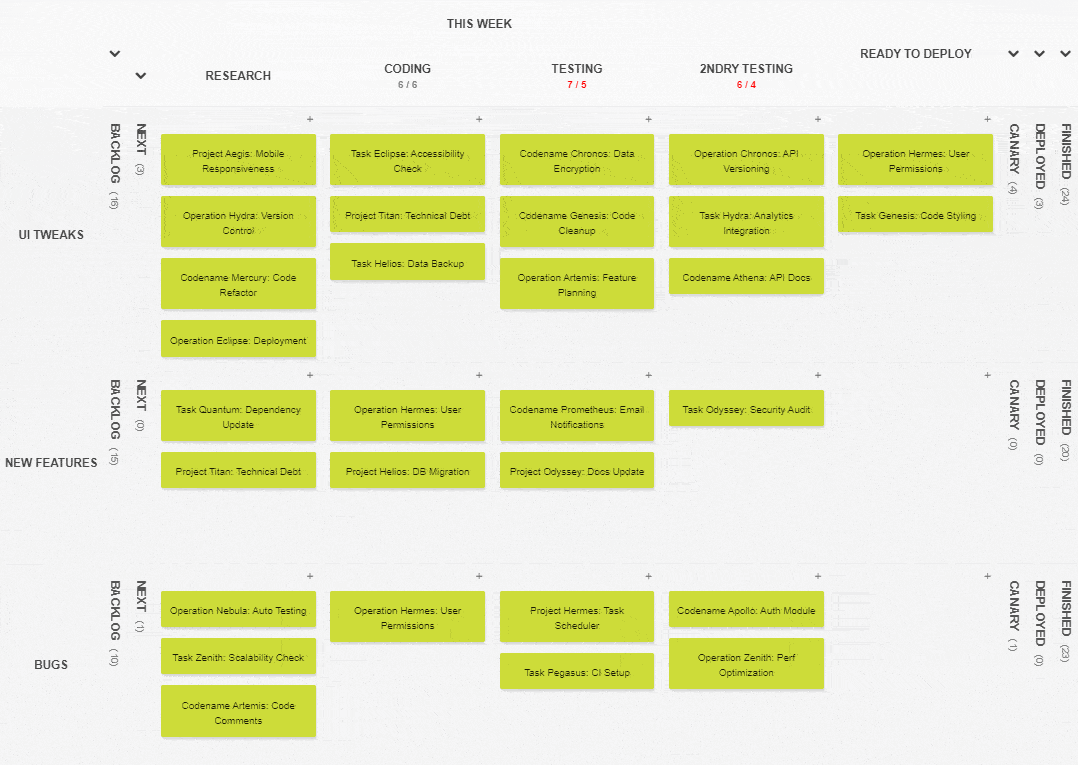
2. Measure flow efficiency and break it down
Flow efficiency—a value different from process efficiency—is often misunderstood or ignored altogether. It's a ratio of active work time to total elapsed time. Low process efficiency doesn’t just mean idle or slow workers. More often than not, it also means piles of queued work waiting on resources, decisions, or with unclear ownership.
Tactical step:
- For a sample of tasks - e.g., the last 20 completed items - reconstruct their path: time spent in active working stages vs. time waiting.
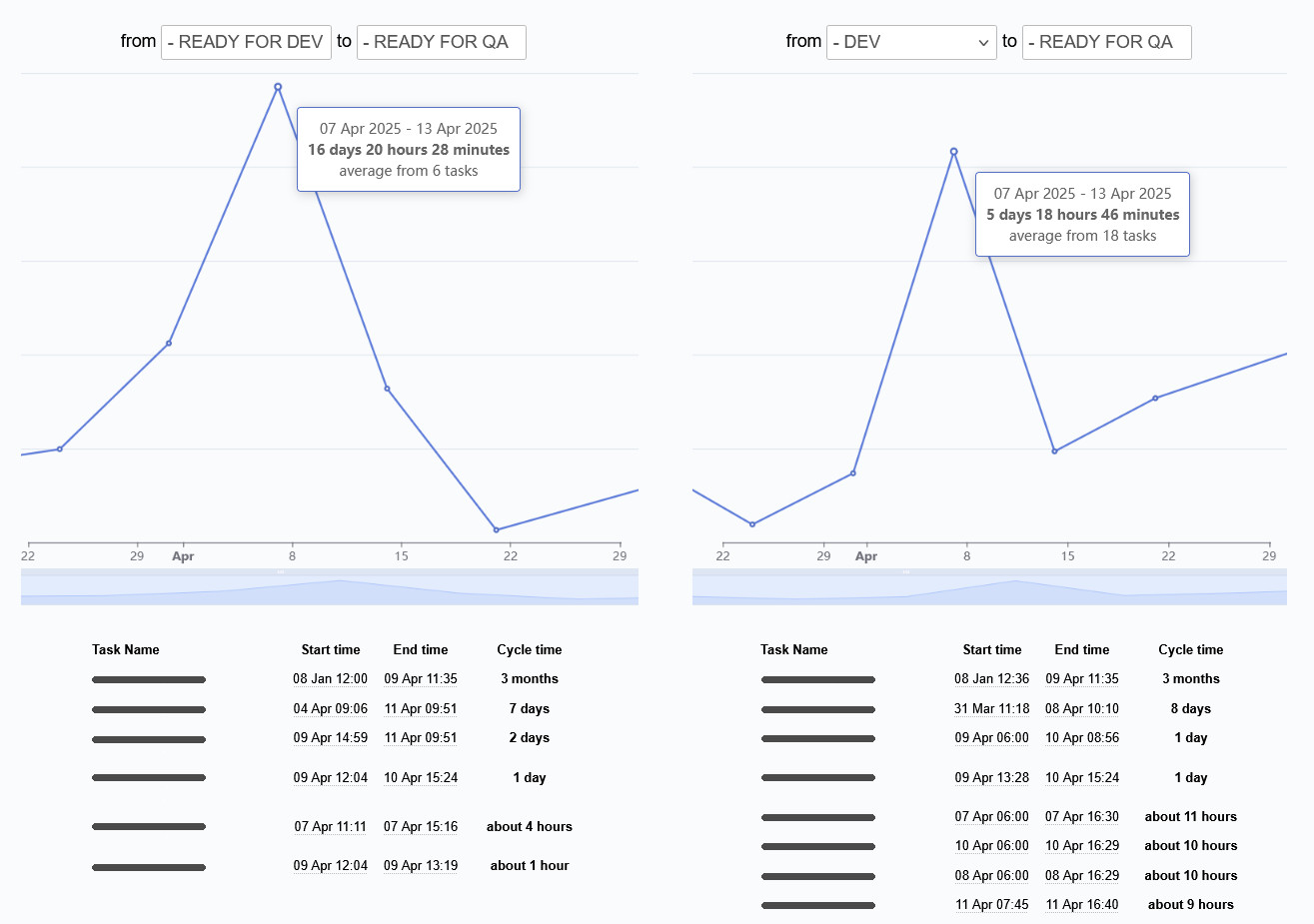
- Look at the cumulative flow diagram of your board to identify where the horizontal bands widen — that’s where queuing is most prevalent.
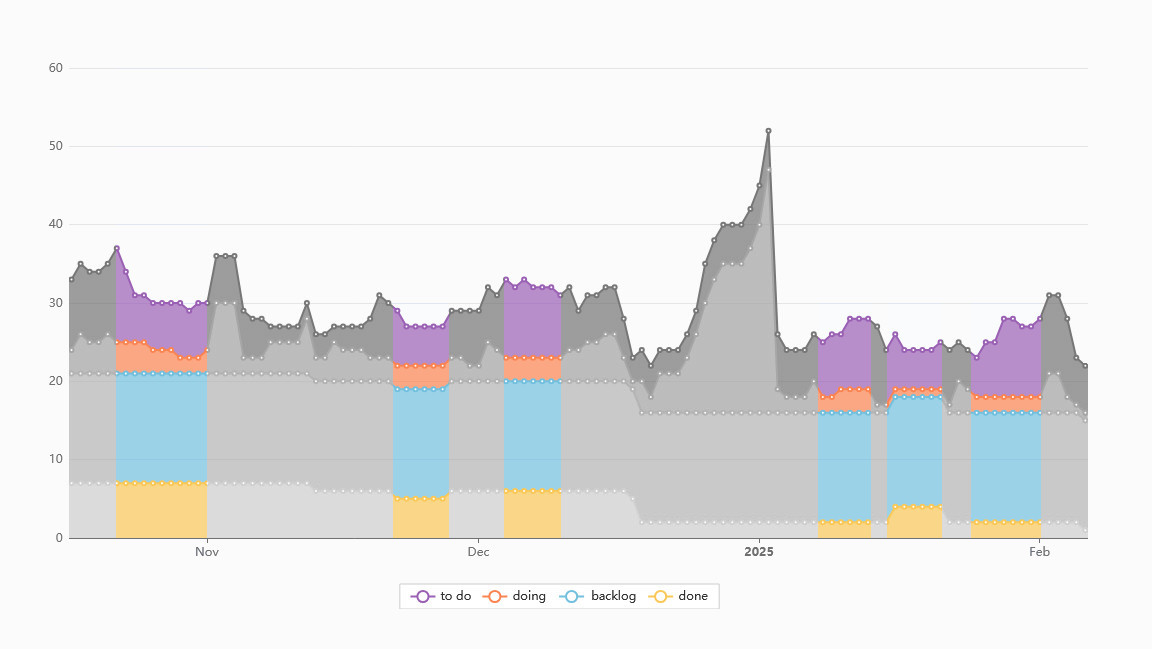
A high volume of work in progress, a low process throughput, and a flat CFD indicate that a flow-disrupting bottleneck is ongoing. Rather than generalizing it, investigate where, when, and why it started.
3. Isolate the constraint with smart WIP limiting
When you suspect a bottlenecked process step, impose a stiff WIP limit upstream of that column, then observe what breaks or slows down. It's just a diagnostic maneuver, not a fix. The goal is to trace dependency patterns and uncover hidden constraints, e.g., knowledge silos or resource contention.
Key move:
Temporarily lower the WIP limit in the column preceding the likely bottleneck and monitor where work starts backing up next. It will validate whether the column you suspect is truly the problem, or merely a visible consequence of a bottleneck upstream.
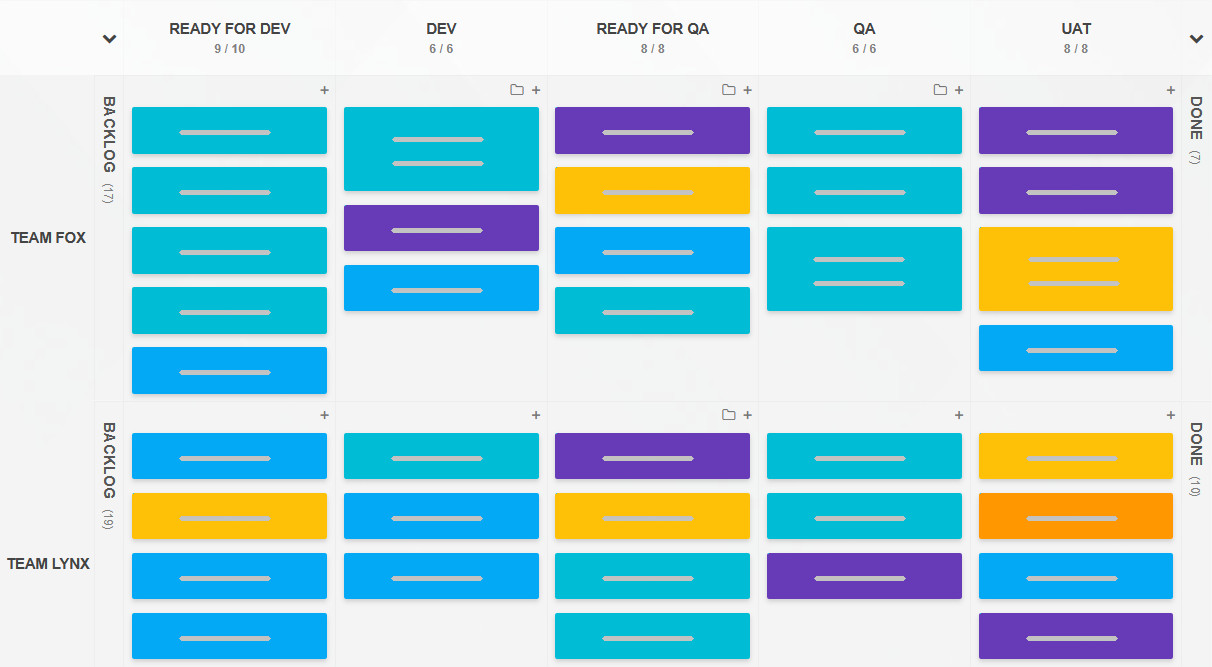
4. Use card types to reveal load imbalance
Not all tasks are created equal, hence, they don't flow through the process at an equal pace. Without explicit work item classification—e.g., bugs, features, investigations, compliance—the demand patterns remain invisible to you. For instance, a bottleneck may stem from disproportionately high-effort work being funneled to a generalist team.
What to do:
- Assign a card type to each work item.

- Make sure this classification is overlayed in your throughput metrics.
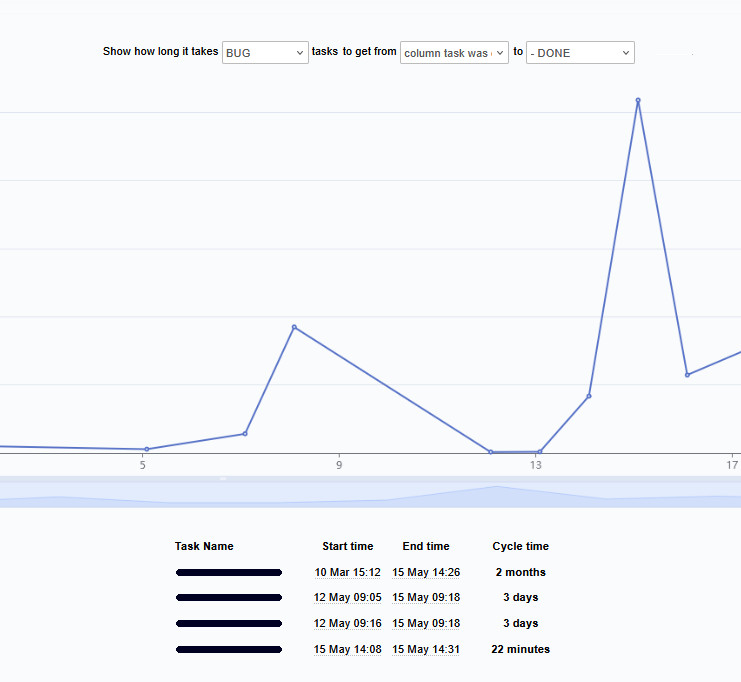
You may discover that a majority of tasks entering the “Dev” column are tech-debt refactors requiring deeper context, which explains why throughput crashed after a team reshuffle. So the constraint isn’t in the process itself, but the clash of work composition versus team capability.
5. Examine hand-offs for latency, not volume alone
Many blockers emerge not in execution but in transition. Hand-offs between roles or teams (e.g., from design to development) are loaded with latent delays: unacknowledged notifications, unanswered questions, ambiguous ownership, or partial information.
Practical diagnostic:
- Ensure each hand-off—a card entering and leaving each column—is time-stamped and logged.

- Measure average hand-off latency.
- Correlate with failed acceptance or rework rate.
A consistent lag after hand-off doesn't indicate a resource shortage, but a coordination breakdown. The solution could be role co-location, a stronger definition of "ready", implementing team pairing, or direct supervisor policies during transition phases.
6. Apply the "5 Whys" to the bottleneck, not its symptom
When a given work stage clogs, avoid postmortem theater. Instead, execute a root cause analysis there and then, ideally involving the team members directly engaged with the work items in the column.
Method:
- Pick a card that aged beyond the 85th percentile in that work stage.
- Ask: "Why did this card wait so long?"
- Repeat for each answer until you surface a structural cause, e.g., “the person who approves this step is overloaded” → “we haven’t reassigned approvals since the team changed” → “approvals are centralized but workloads aren’t monitored”.
7. Solve at the policy level, not the hero level
Once you have verified the bottleneck, avoid the urge to fix it with effort (more hours, more people) or goodwill (favors, nudges). Those are unstable solutions. Instead, adjust pull policies, redefine entry criteria, or restructure the board to reflect the real-life work segmentation.
Examples:
- If Quality Assurance is blocked on incomplete specs, mandate a checklist at the "Ready for QA" stage.
- If design rework delays development, introduce a “Ready for Dev” buffer column with a dual acceptance gate (PM + Designer).
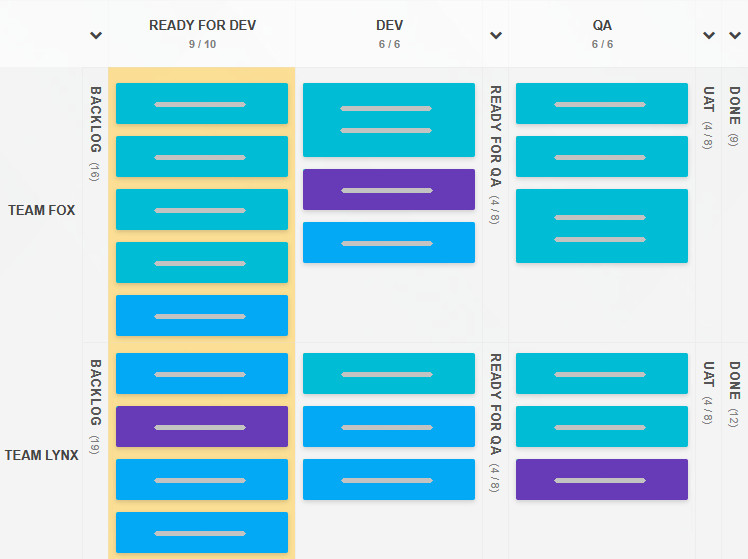
Kanban policies are, in fact, social contracts. Tweak them to build alignment and reduce rework cycles contributing to flow congestion.
8. Implement feedback loops that surface early blockage signs
Bottlenecks tend to recur in cycles. Establish short feedback loops to detect the recurrence before it impacts the flow. Daily stand-ups should include not only status updates, but observations such as “I’ve had this card sitting in review for two days” or “QA has three cards and only one person available”.
Tooling tip:
- Use visual cues like “card aging” with ongoing tasks fading in color to surface issues without requiring someone to report them manually.

9. Limit WIP all-round, not just locally
Using column-level WIP limits is helpful, but insufficient if you don’t model the system-wide throughput capability. When the system has too much work in flight, the pressure transmits all over, leading to delayed feedback, context-switching, and brittle flow.
What works:
- Calculate average throughput each week.
- Set a system-wide WIP cap—ideally 1.5–2x throughput.
- Monitor for breach points: where cards keep piling up despite the cap.
10. Treat constraints as dynamic
Kanban is not a static process, and neither are its constraints. Today’s bottleneck in Quality Assurance could shift to User Acceptance Testing next week because of external dependencies. It is best to build a practice of bottleneck rotation tracking. Every retro should include a review of where the constraint is right now, not where it was last quarter.

Final thought
Diagnosing and fixing bottlenecks in a Kanban system is an exercise in systems thinking, not team blaming ;) The process exposes fault lines between plan and execution, between what your board claims and your system does. The healthy fix is rarely a heroic push—it’s usually a discreet policy change or insight applied precisely where the system cannot self-correct. Rather than thinking of bottlenecks as problems, think of them as feedback, and learn to listen closely.
Sign up for a 14-day free trial
to test all the features.
Sign up now and see how we can help
your organization deliver exceptional results.